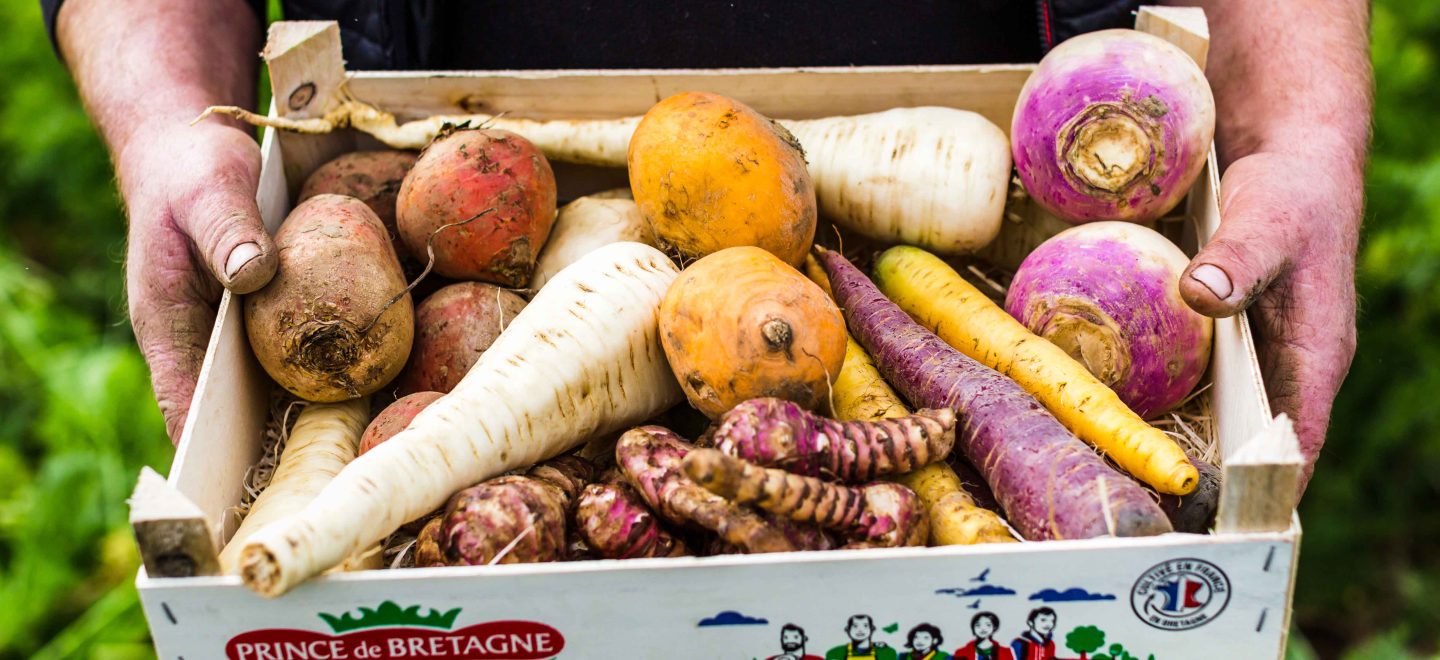Could it be the vintage craze that’s making heirloom vegetables so popular? We can’t say for sure. At any rate, ever since SICA (the Prince de Bretagne agricultural co-op in Saint-Pol-de-Léon) launched its heirloom vegetable offer, farmers have seen their business growing, and more and more of them are producing beets, turnips and parsnips. From supermarket shoppers to Michelin-starred chefs, heirloom vegetables have been all the rage for the past ten years or so. We asked André Péran, a Prince de Bretagne grower in Cléder, Finistère since 1985, to introduce us to this group of vegetables.
Heirloom vegetables: around twenty kinds on offer
The first heirloom vegetables André Péran grew was the Jerusalem artichoke. “It was in demand. I found some tubers and began by planting half a hectare (5,000m²).” Today, André grows every vegetable in Prince de Bretagne’s heirloom range, which contains around twenty varieties. Each year, on 25 hectares, he produces between 400 and 500 tonnes of these vegetables: Jerusalem artichokes, parsnips, parsley root, Chioggia beets, coloured carrots, New Zealand yams (oca), coloured radishes, turnip-rooted chervil, turnips and mashua, as well as Peruvian ground apples (yacón), sweet potatoes and shallots.
Heirloom vegetables and the Breton climate: a recipe for success
Heirloom vegetable varieties thrive in the soil and mild, wet, climate of Northern Brittany. Year after year, yields are high and the quality of the produce is outstanding. Sowing and planting for heirloom vegetables begins with some varieties in February and continues until the end of spring. Harvesting takes place from summer through to November. Although these vegetables are mechanically harvested, they are packed exclusively by hand, which guarantees the quality of the products we offer.
A dedicated heirloom vegetable wash station
Heirloom vegetable growers have organised themselves over the years, to the point that they now have a dedicated wash and packing station for their produce. Traditionally used for cauliflower and potatoes, the Kerannou station in Saint-Pol-de-Léon was gradually turned over to heirloom vegetables. The 25 growers of SICA Saint-Pol now have the advantage of an efficient structure located only a short distance from their farms. “We opted for a collective wash line with operators employed by SICA. This gives us more flexibility and responsiveness to process the vegetables.” In addition to saving time, this wash station also meets all current quality and environmental standards.
A family tradition of vegetable farming
André Péran and his wife Françoise began farming in 1985, following in the footsteps of at least three generations of vegetable growers. “In the 1960s and ‘70s they were growing mostly cauliflower and some carrots. It was just the basics!” Today, André is proud to have expanded his offer and is determined to keep growing his business. His passion for his work is evident in his description of each heirloom vegetable he grows. “For parsnips, over the years we’ve managed to select a great variety with a good conical shape and white colour. The look of the vegetables is important: it adds to the enjoyment of consumers. (…) The red, blue, pink and green meat radishes are really beautiful. They’re stunning! They look great on your plate! They have quite a strong and spicy taste and a good crunch.”
Overlooked for a long time, heirloom vegetables are now back in the spotlight. They’re highly nutritional and can be cooked in many different ways. They’ve also caught the eye of top chefs who use the shapes and colours of these root vegetables to express their creativity.
Click here to discover our range of heirloom vegetables.
Photos : L’oeil de Paco / Prince de Bretagne
